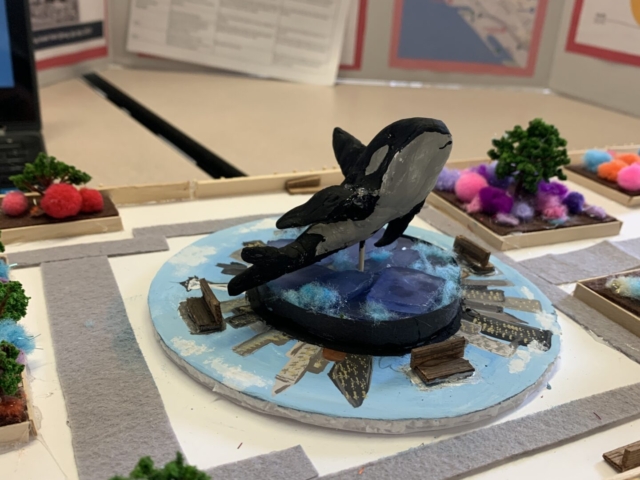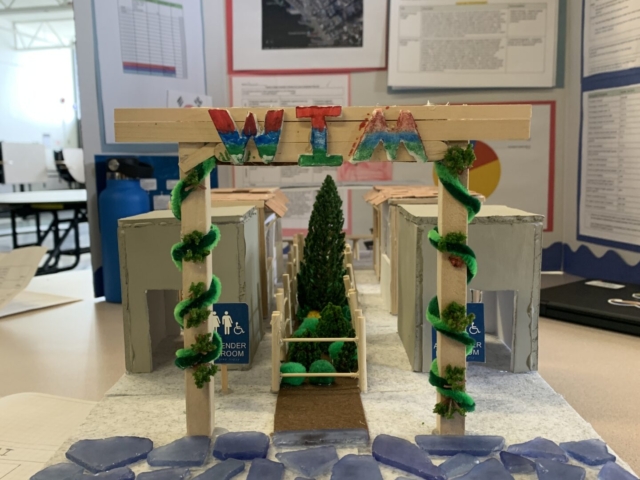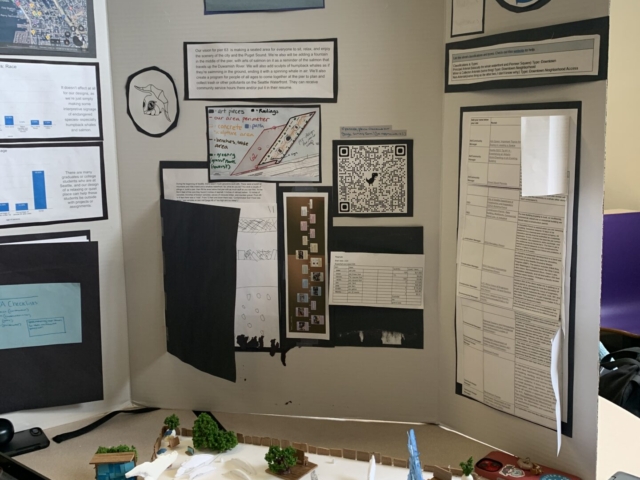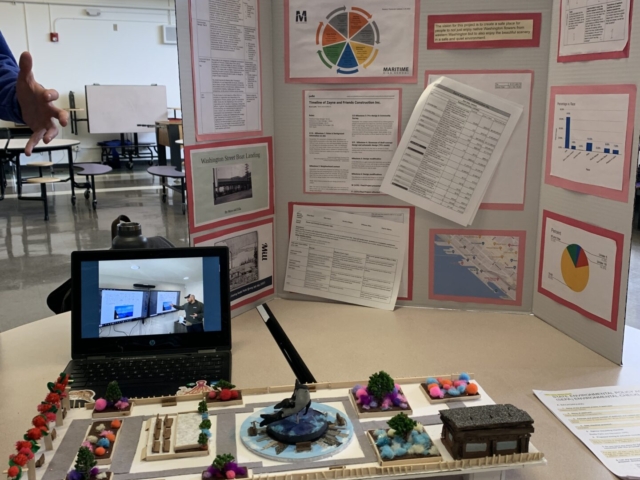10th-grade Maritime High School Students Dive into Urban Development
This last spring, Maritime High School’s 10th-grade students completed an inspiring waterfront design project that showcased the true power of project-based learning as they collaborated with industry and community partners—including Mithun, Pacific Pile & Marine, Antioch University, and the Seattle Public Library—to create a hypothetical Pier 63.
The project delved into crucial questions:
- How do we radically re-envision our public spaces and design waterfront parks for the future?
- Which materials should be selected for the construction of piers?
- What are their properties and how can those properties be tested?
- How do we incorporate the history of the site, its ecology, economy, and communities to create a sense of place that will invite residents and visitors alike to visit the waterfront?
Together, the students brainstormed designs, managed budgets, analyzed demographics, and incorporated community feedback into their 3D creations. They consulted with professionals from various fields, such as engineers, architects, marine construction workers, urban planners, and artists, gaining valuable insights during their fieldwork experiences.
Pacific Pile Marine (PPM) played a crucial role in supporting the students. They provided two one-day lessons, offering valuable information on building piers and marine structures and selecting appropriate construction materials. The students visited different piers on the Seattle waterfront, learning about the history of the waterfront, the challenges of constructing in a congested marine environment, and importance of balancing private and public uses of the spaces.
One student, Rowen McLean (he/him), highlighted how they applied their knowledge from different subjects including STEM, Humanities, and Spanish to their designs and how the support from the partners guided them in their project. “We worked with Mithun around how to remain on budget, and Pacific Pile to learn which materials to use and how expensive pilings are to regularly replace and maintain. Antioch students helped us understand who is already on the waterfront we are interacting with if we are building on the pier and what is around us already, which informed how we wanted to include multilingual and interpretive signage, including braille, to bring in the audience we hope to draw in with our pier,” he explained.
PPM’s JC Clark was amazed by the students’ final projects, emphasizing how they transformed complex concepts into tangible, meaningful real-world work. The students presented scaled models, written proposals, and budgets for the future Pier 63, demonstrating exceptional creativity and thoughtfulness. Clark summarized the experience by saying, “We believe it’s important for industry to get involved with the project-based learning fieldwork because it can help shape the students’ learning outcomes to match with what we all collectively would like to see from the next wave of maritime professionals coming into the industry. Plus, it’s an opportunity to help the next generation of this country develop into educated and engaged adults, what’s more important than that?”





